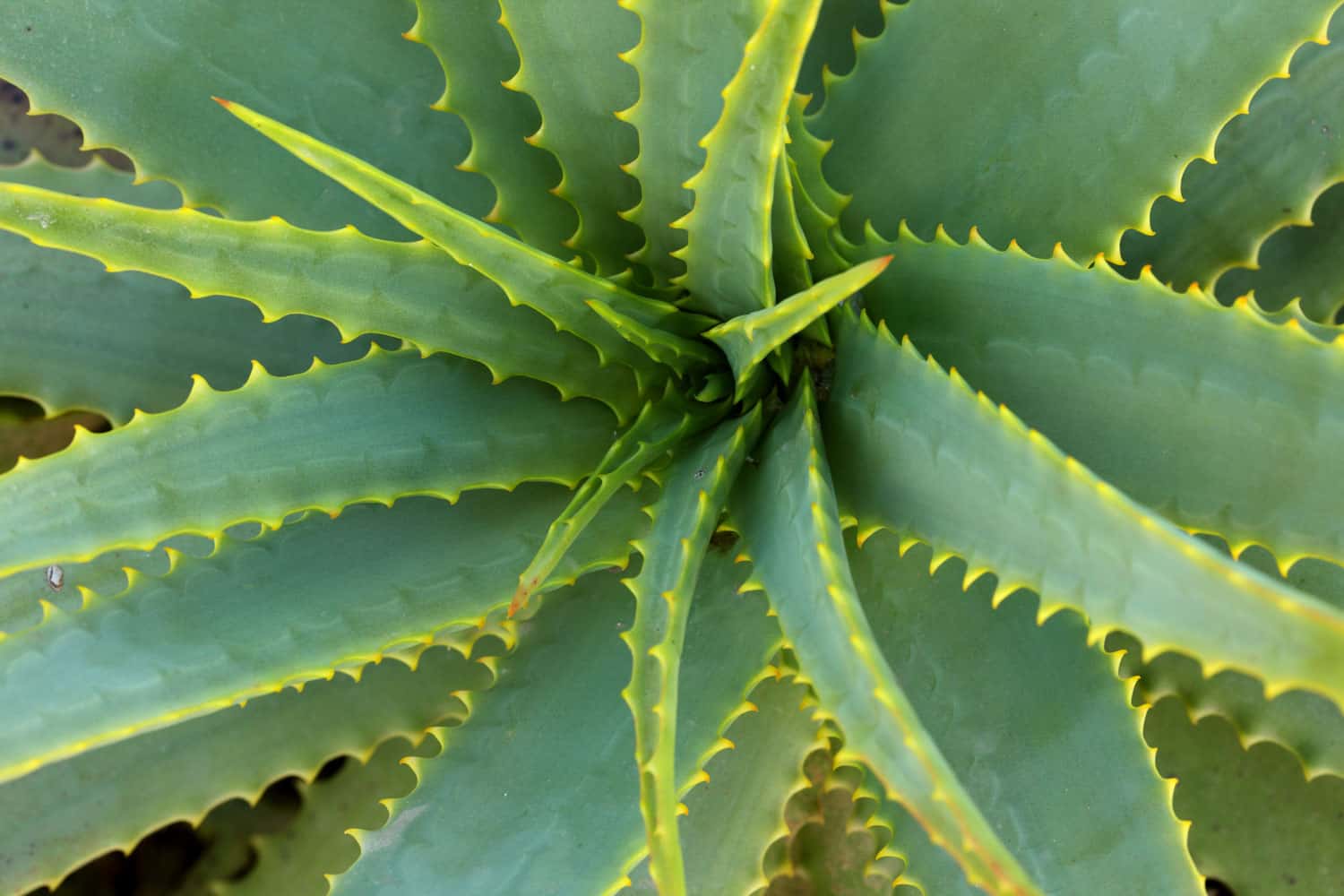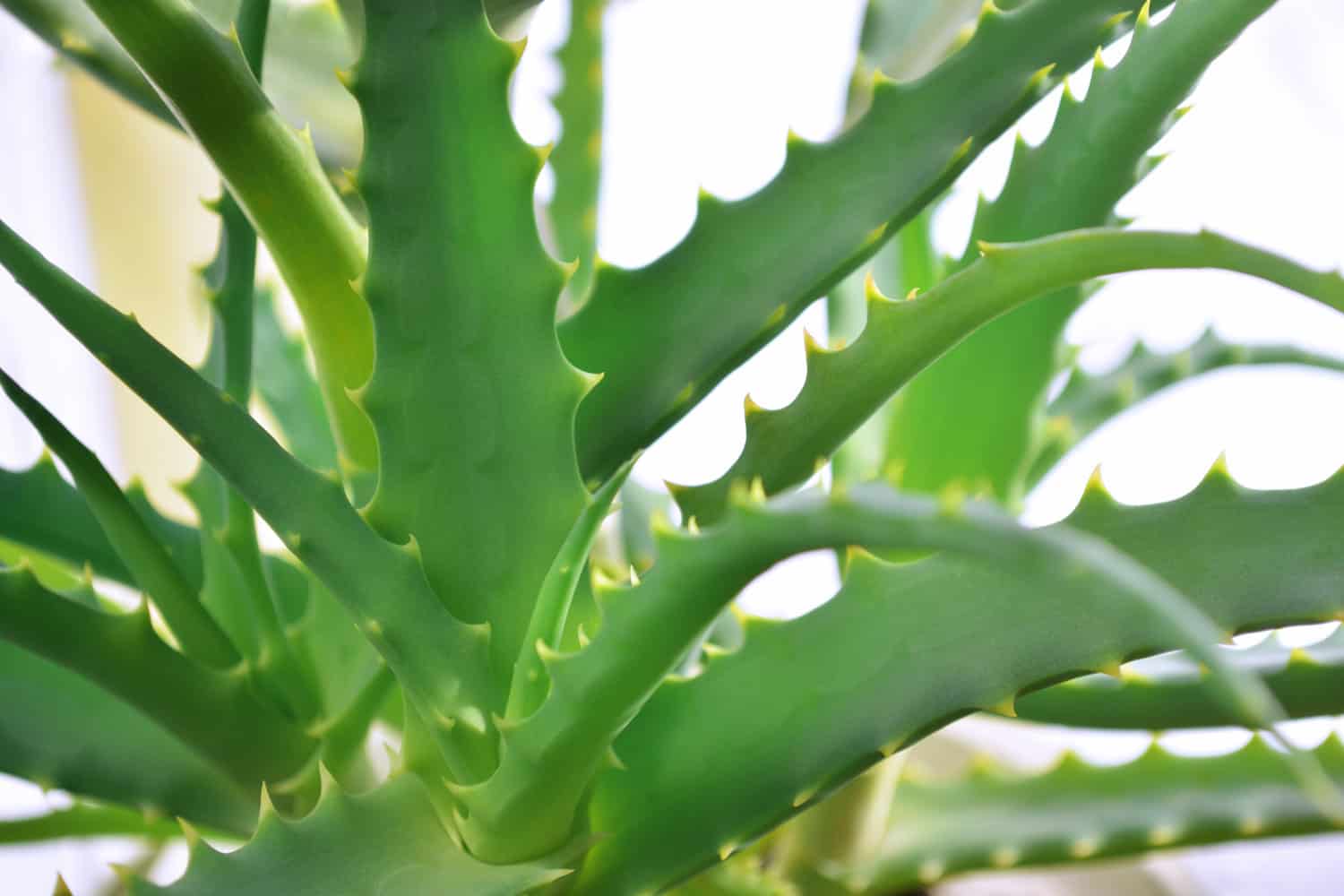Are you interested in enhancing your space with some living decor? Consider aloe vera, the ideal plant for minimal upkeep without sacrificing style.
This plant isn't just visually striking — it's also renowned for its health benefits.
Choosing the suitable aloe vera variety for your indoor environment is key. Not all aloes are created equal, with certain types more ideal for the indoors based on their light, humidity, and temperature needs.
Keep reading to know the best picks for your home and offer practical advice for nurturing your aloe vera!
Why Grow Aloe Vera Indoors
If you're looking for a low-maintenance plant that can add a touch of green to your indoor space, aloe vera is a great choice.
This succulent is easy to care for and has several benefits, making it a popular choice for indoor gardeners.
One reason to grow aloe vera indoors is for its air-purifying properties. Like many plants, aloe vera absorbs carbon dioxide and releases oxygen.
But it also removes harmful chemicals from the air, such as formaldehyde and benzene, making it a great addition to any home or office.
Another benefit of growing aloe vera indoors is its medicinal properties.
The gel inside the plant leaves is known for its soothing and healing properties, making it a popular natural remedy for sunburns, cuts, and other skin irritations.
In addition to its air-purifying and medicinal properties, aloe vera is a beautiful plant that can add a touch of green to any indoor space.
With its fleshy, succulent leaves and striking shape, aloe vera is an excellent choice for those looking to add a touch of natural beauty to their home or office.
Top Varieties of Aloe Vera for Indoor Growing
If you're looking to grow Aloe Vera indoors, there are several varieties. Here are some of the best types for indoor growing:
Aloe Barbadensis Miller

Aloe barbadensis miller is the most commonly found variety of Aloe Vera. It is known for its medicinal properties and is often used in skincare products.
This variety of Aloe Vera is easy to grow indoors and requires minimal care. A. Barbadensis can grow up to 2-3 feet tall and has long, fleshy leaves.
Aloe Vera Chinensis

Aloe vera chinensis, or Chinese Aloe, is a smaller variety of Aloe Vera perfect for indoor growing. It is a slow-growing plant that can reach up to 18 inches tall.
This variety of Aloe Vera has thick, triangular leaves that are green in color with white spots.
Aloe Arborescens

Aloe arborescens, also known as Krantz Aloe, is a more extensive variety of Aloe Vera that can grow up to 10 feet tall.
A. arborescens has thick, fleshy leaves that are green in color with reddish-brown spines along the edges.
This variety of Aloe Vera is known for its ability to produce large, showy flowers that bloom in the winter.
Caring for Your Indoor Aloe Vera
Aloe vera is easy to care for, making it a popular choice for indoor gardening. Here are a few tips to help you keep your aloe vera plant healthy and thriving:
Lighting
Aloe vera plants need plenty of bright, indirect sunlight to grow properly. Place your plant in a south- or west-facing window to give it the most light possible.
If your plant is not getting enough light, you can supplement it with grow lights. Be careful not to expose your plant to too much light, which can cause burns.
Temperature
Aloe vera plants prefer temperatures between 55 and 80°F. They can tolerate cooler temperatures, but they may not grow as quickly.
Watering
Aloe vera plants do not need a lot of water, as they store moisture in their leaves.
Water your plant deeply once every two weeks, waiting until the soil dries out entirely. Overwatering can cause root rot, so be careful not to let your plant sit in water.
Soil
Aloe vera plants prefer well-draining soil. Use a cactus or succulent mix, or make your own by mixing potting soil with sand or perlite. Avoid using heavy, clay-based soils.
Click here to buy this succulent mix on Amazon.
Fertilizing
Aloe vera plants do not need a lot of fertilizer, but you can feed them with a balanced fertilizer once a month during the growing season (spring and summer).
Be careful not to over-fertilize, as it can damage your plant.
Troubleshooting Common Aloe Vera Problems
Although Aloe vera plants are generally easy to care for, they can still experience problems.
Aside from overwatering or underwatering, here are some common issues you may encounter when growing Aloe vera indoors and how to troubleshoot them:
Sunburn
Aloe vera plants need plenty of sunlight to thrive, but too much direct sunlight can cause sunburn.
If you notice brown or yellow spots on the leaves, move the plant to a shadier spot or provide some shade with a sheer curtain. You can also try rotating the plant regularly to ensure all sides get equal sunlight.
Pests
Aloe vera plants can attract pests like mealybugs and spider mites. If you notice small white or brown spots on the leaves, it's a sign of infestation.
To fix this issue, wipe the leaves with a damp cloth or spray them with water and mild soap. You can also use a pest oil to repel pests.
Wrapping Up
Aloe vera is a fantastic plant to have indoors. It's super easy to maintain, and it comes with some tremendous benefits, like air-purifying and medicinal properties.
Just put in some love and effort. Your aloe vera plant can thrive and make your space look beautiful and natural. Remember to choose a suitable variety for your environment and give it enough light, water, and fertilizer.

